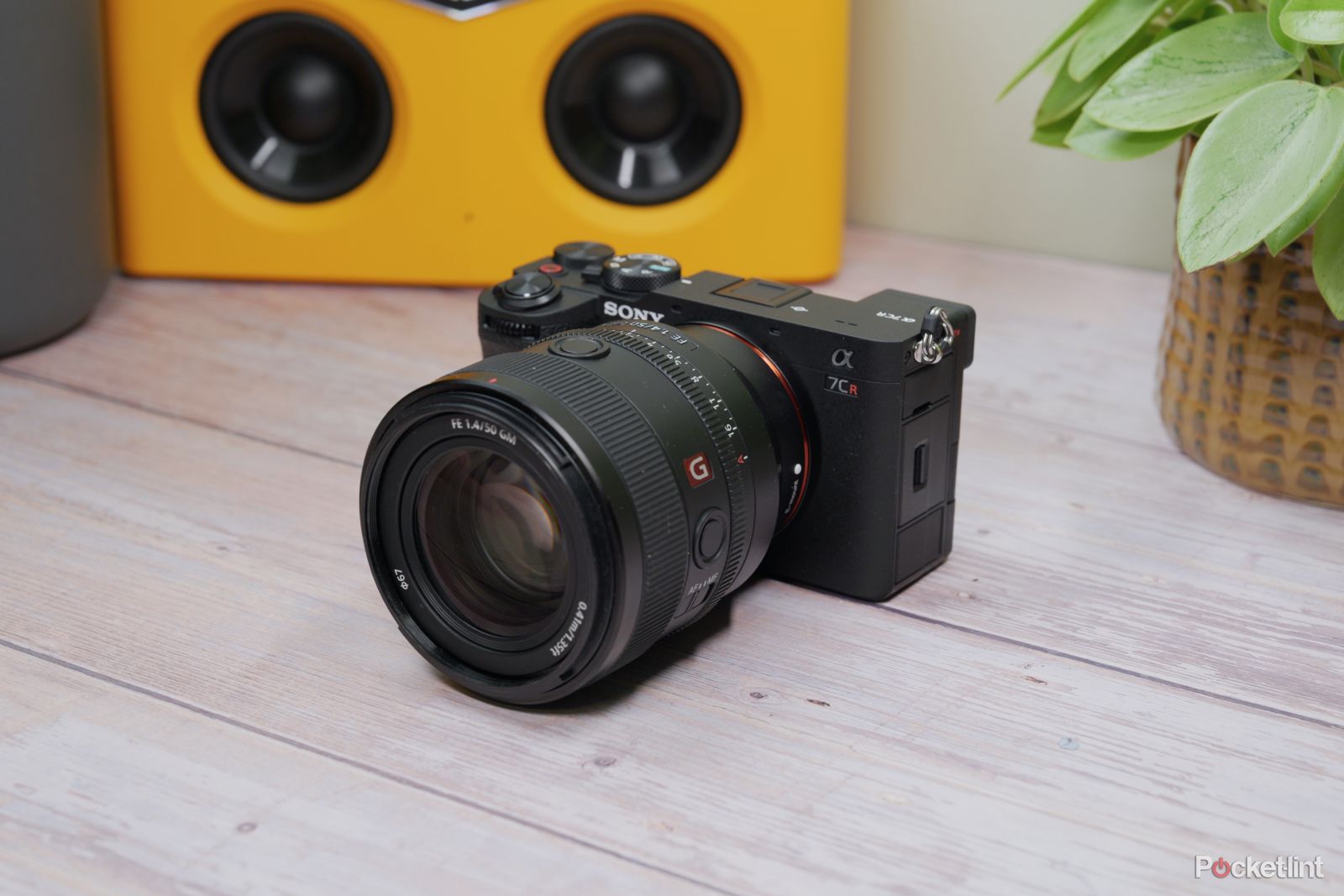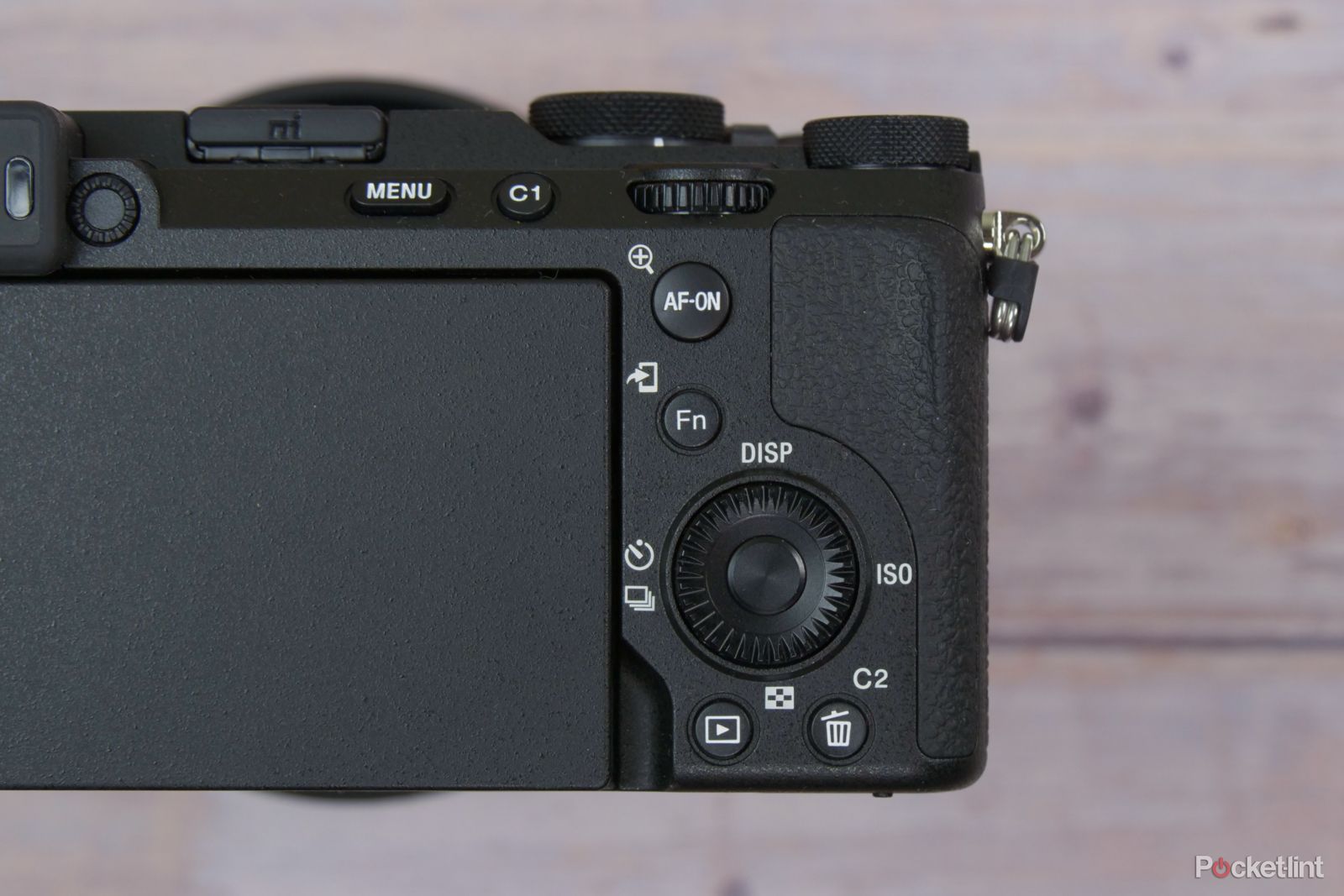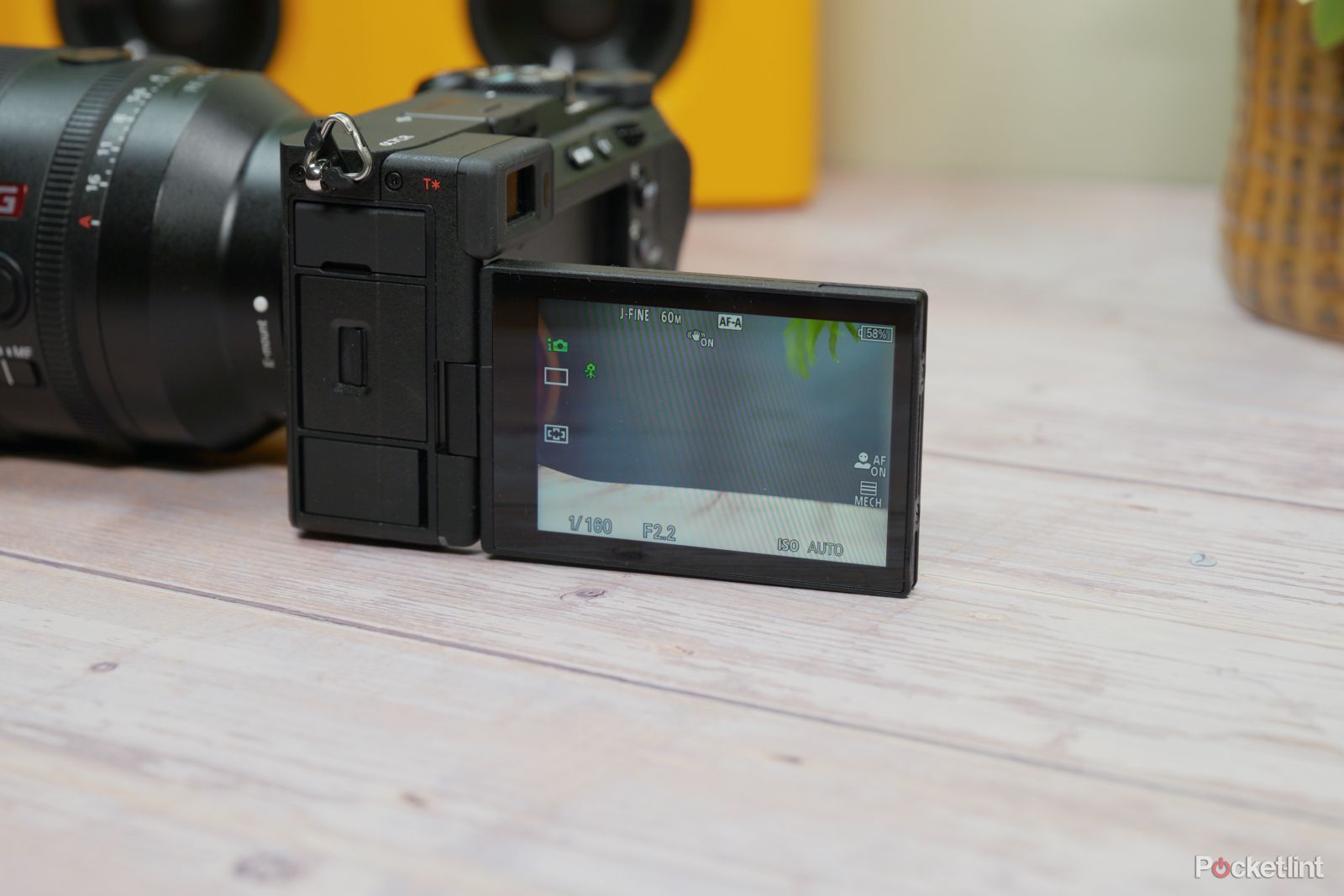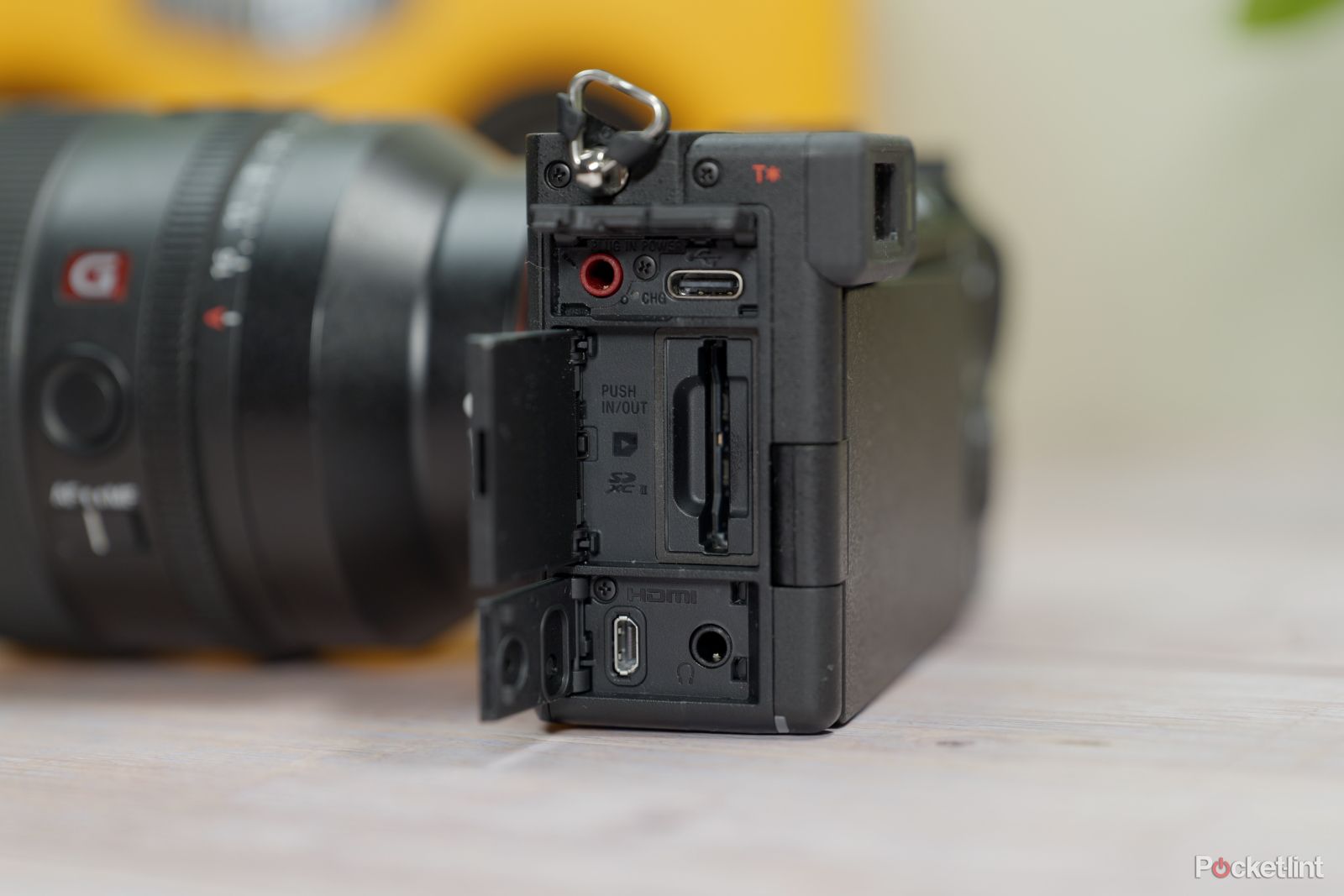For a few years now, Sony has been pushing the boundaries of what kind of performance you can expect from a small-bodied camera. The full-fat Alpha 7 series in itself was groundbreaking for its portability, and is still home to some of the most handily-sized full-frame cameras available.
Its latest wave of impossibly small full-frame cameras started with the A7C a couple of years back, where Sony pushed its full-frame sensor into an even smaller body than before. Then – with the ZV-E1 – delivered a similar experience in a body not much bigger than its other super-compact ZV-series vlogger cameras.
There are limitations with both of those examples, however. Most notably: video performance and resolution weren’t super high-end. And that’s where the new A7C series comes in, which – this year – includes the A7C R. This ‘R’ concept camera features a ridiculous 61MP sensor. I’ve had the absolute pleasure of testing it, and boy is it something special.

Sony A7CR
The A7CR is here to show exactly what Sony is capable of: delivering phenomenal image quality and smart features in a really compact camera.
- Incredible image sharpness and detail
- Compact, lightweight design
- Great autofocus and subject-tracking features
- It’s consistent and reliable for stills and video
- It’s pricey
- Only one SD card slot
Design
- Dimensions (body only): 124 x 71 x 63.4mm
- Weight (body only): 438g
The big appeal with Sony’s latest A7C models is the same as the first series: compactness. And in the case of the A7CR, it’s a huge reason to get one. Because – as I’ll get to later – having a small camera like this, with the resolution on offer means not having to take a mega zoom lens with you. So you can take one compact lens, with a compact camera, and travel light.
Every shot in this review was taken with a 50mm prime f/1.4 G Master lens. No zoom, just a compact portrait lens, for everything. It made for a camera that didn’t take up a lot of space in my bag when I went on holiday. It’s lightweight too.
Despite its diminutive size, the camera still features a lot of the controls you’d expect to find on a full-sized camera. It has two rear dials for easy reach with a thumb, and even has one on the front, at the top of the grip, for easy index finger action. It means fast adjustment to settings like aperture and exposure comp without needing to dig through any settings.
Sony has still managed to keep the top panel quite clutter-free. There are only two buttons you can press there – one at the top of the grip is your usual shutter button, and then there’s the red movie button for capturing video. Simple.
To keep things similarly clean on the back, the ‘display’ and ‘ISO’ buttons are on the rotating dial around the central ‘select’ button. You do get customisable custom function buttons too, plus the usual zoom/AF button. Otherwise, that’s it.
I love the size of the grip on the front too. It’s a generous handle to hold on to when carrying it around during a shoot. Combined with the weight, it means it’s not tiring to move about with. Unless – of course – you shove a mega lens on the front, at which point, the balance will almost certainly shift to the front and make it harder to hold. With a small lens, it’s well-balanced and light.
For more niche, professional use cases, this means the ability to mount it in a number of ways. Whether that be to stick it on a professional drone, long pole for shooting higher shots, monopod or compact gimbal.
What’s it like to use?
- Fully articulated million-dot LCD touchscreen
- Single SD card slot
- USB-C (with Power Delivery) – 3.5mm audio in – 3.5mm audio out
- Digital multi-interface shoe – micro HDMI
Sony’s efforts in the ZV-series to de-clutter its touchscreen user interface have really paid off for Alpha-series users too. Where controlling elements like the ISO, shutter speed, white balance and aperture used to be fiddly, the latest camera user interface is simple and easy to use.
The screen has frequently needed controls on the screen and an easy way to swipe in the rest of the settings if you need to. These can include quickly switching between human, animal, insect, car and plane/train recognition right from the main screen. Before, switching had to be done by digging into the main settings menu, and finding the right field in that menu could be a challenge.
Now, you can go from shooting a portrait of a person to shooting a bee or butterfly in a couple of taps on the touchscreen. It’s brilliant.
Another lesson Sony’s learned since focusing on the content creator/vlogger market is that we all want a proper articulating, manoeuvrable touchscreen that can be turned and angled to face in any direction. The new A7C series models have one of those too. So, whether you want to capture video of yourself, and rotate it to face you, or rotate it to be parallel to the ground and shoot low-down shots, you get that flexibility.
If you do dive into the main settings menu, it’s got Sony’s most recent user interface which – again – was redesigned over the past couple of years to make it easier to navigate. It’s colour-coded and has separate sections for the autofocus/tracking settings. That’s handy if you want to change the eye detection from left to right eye, for instance, among many other settings.
Of course, you don’t have to use the touchscreen for everything. If you’re a traditionalist who loves peering down the barrel, there’s a new XGA OLED 2.36-million dot viewfinder.
Having a smaller body does mean there’s a little less space for some things. One of those is a second SD card slot. There’s only one card slot here, whereas most of the larger models have a dual-slot set up. It’s a bit of a limitation in that – with a full SD card – you need to then offload footage or delete files in order to continue or ensure you’re carrying spares to swap out.
Otherwise, there’s a lot of flexibility here for all manner of use cases. You get USB-C for charging and data transfer (including support for Power Delivery fast charging), there are two 3.5mm ports (one for a mic, the other for headphones), and you get the digital multi-interface shoe on the top for connecting a more advanced multichannel audio interface, camera flash or microphone.
Like having a bonus macro
- 61MP – Exmor R CMOS full-frame sensor
- In-body 7-step stabilisation
- 100-32000 ISO range for stills/movie – expandable to 50-102400 in stills
- Up to 8fps continuous shooting
Apart from its compact size and ease of portability, the 61-megapixel sensor inside is the star of the show here. And – as I alluded to – it’s the type of sensor that means not having to carry lots of different lenses for different purposes.
While a wider lens could have been useful for my closer product photography and videography for our YouTube videos, from a stills perspective, while out in nature, it was super. Even while limited to using just the single portrait lens for photos, I could crop in the edit really close, and still not lose detail.
Just so you get a sense of what I mean, I’ve included some full images that I captured, plus a 100 per cent crop of that same image using our usual 1600 x 1067 3:2 site template. The most striking examples were simple shots of some wild grasses, thistles and flowers.
Look through those crops and suddenly the standard grass shot becomes a beautiful, detailed, close-up of a butterfly or a bee where you can clearly see the intricate patterns of their wings or the detail in the compound eyes.
Similarly, the thistle’s ‘fluff’ shows its mini strands of fur. It’s staggering how much detail you can get from this lens at full resolution – to the point where it’s like you’re carrying a macro lens with you at all times, even when you’re not. Each shot has a bonus macro shot for free.
The only downside of having such a pixel-dense sensor is – when using that full-sensor resolution – there’s a little noise when shooting in low-light situations. But even here, the pictures come out looking great, even when the ISO kicks all the way up to 12,800, which it did when shooting at dusk/sunset. It’s only really when I cropped into the shadows and got close to the shots that this noise becomes more apparent.
It’s worth noting, the limits of its ISO sensitivity can reach even higher if necessary. It can go up to 32,800 by default – in both video and still – but can be expanded further to 102,400 for stills.
As you’d expect from a quality Exmor R CMOS sensor, image quality is generally superb. Colours, shadows, highlights, depth of field and dynamic range were all wonderful, capturing images with all the detail and life you could possibly hope for.
Video chops
- 4K/60p 1.2x crop – 10-bit – 4:2:2
- 4K/30p – 6.2K oversampling in Super 35
- Real-time tracking, subject recognition, fast focus
While this ‘R’ model is clearly more aimed towards photography than the standard A7C MkII, it’s still got plenty of video performance under the hood, that will more than do the job for anyone not looking to shoot absolutely crazy high resolutions and frame rates.
You’ll get 4K resolution recording at 60 frames per second with a slight 1.2x crop, or you can shoot in 4K in Super 35 mode with a supersampled 6.2k video at up to 30fps, depending on what you need.
For the professional videographer and colour grader – there’s the option to shoot with preloaded LUTs and the ability to shoot in S-Log modes, but for everyone else you can shoot in the standard picture profile and know that the final colour will look pretty much bang on with what you see with your eye.
I was impressed by the natural, well-balanced (but not dull) colour and skin textures. Detail is excellent too, as is the quality of the image in terms of low noise and distortion. It’s a great video camera, even if there are others in Sony’s lineup that are more video-centric than this.
As important to the entire experience is the real-time tracking and subject recognition. Using it I was able to shoot a video of my daughter first speaking to camera, then moving away to show off some cartwheel skills and come back to the camera, without losing focus once. Even when her back was turned mid-cartwheel, with her face out of view.
That’s enabled by the AI-powered Bionz image processor Sony has rolled out to a number of its cameras. It not only recognises human faces and eyes, but knows where they are in relation to the shoulders, knees and hips. That way, the subject stays in focus even if their face is obstructed, or facing the other way. And it focuses on the iris of the eye, and doesn’t get distracted by eyelashes, which is great if you’re shooting with a super narrow depth of field.
Connectivity and battery life
- USB-C with Power Delivery
- 540 shots from a full battery
As you’d expect from a modern Sony, there’s onboard Bluetooth for connecting to your smartphone. You can use the Sony mobile app to access files, transfer them to your phone and share them immediately to social media.
As mentioned, there’s a USB-C port for transferring data to your laptop or desktop computer, which also doubles as a way to quickly charge the camera via Power Delivery. It’s a great feature to have if you’re out and about and worried your battery might drain. You can quickly hook it up to a power bank and have it back up to a good level in relatively little time.
Not that battery life was ever really a concern. It uses the same battery as most of Sony’s other high-end consumer cameras, delivering up to 540 shots on a full battery. It’ll get you through a solid chunk of shooting quite happily.
Verdict
There’s no such thing as a perfect product, but if you’re in the market for a super-compact full-frame camera, with a detailed sensor, great video performance and flawless object tracking and autofocus, there’s not much out there that comes close to the new A7CmR. You’ll need to pay a hefty sum to get hold of one, but it may well just be a price worth paying.
The 61-megapixel sensor delivers a level of detail that’s simply staggering and enables flexibility and versatility in shooting stills that makes it almost impossible to frame a shot badly. Sony’s processing of colours and detail are brilliant, and the usual fast-response autofocus and object recognition and tracking work flawlessly together to make it difficult to get an out-of-focus shot too. Especially when combined with the 7-stop stabilisation inside the camera.
The Sony A7C R is a pure joy to use, in every way. It’s a game-changer.
Trending Products

Cooler Master MasterBox Q300L Micro-ATX Tower with Magnetic Design Dust Filter, Transparent Acrylic Side Panel, Adjustable I/O & Fully Ventilated Airflow, Black (MCB-Q300L-KANN-S00)

ASUS TUF Gaming GT301 ZAKU II Edition ATX mid-Tower Compact case with Tempered Glass Side Panel, Honeycomb Front Panel, 120mm Aura Addressable RGB Fan, Headphone Hanger,360mm Radiator, Gundam Edition

ASUS TUF Gaming GT501 Mid-Tower Computer Case for up to EATX Motherboards with USB 3.0 Front Panel Cases GT501/GRY/WITH Handle

be quiet! Pure Base 500DX ATX Mid Tower PC case | ARGB | 3 Pre-Installed Pure Wings 2 Fans | Tempered Glass Window | Black | BGW37

ASUS ROG Strix Helios GX601 White Edition RGB Mid-Tower Computer Case for ATX/EATX Motherboards with tempered glass, aluminum frame, GPU braces, 420mm radiator support and Aura Sync












